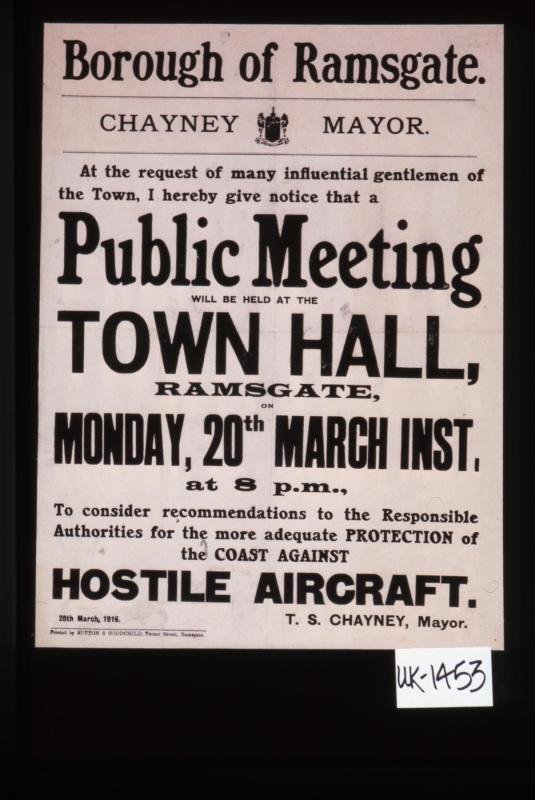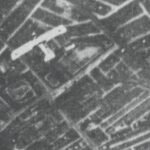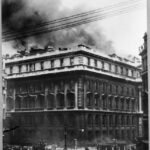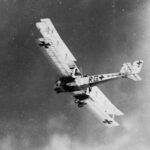
I admit the term ‘First Blitz’ is a convenient label for the air raids on Britain in the First World War, both as a shorthand and because there really were many similarities with the later Blitz. But nevertheless, I don’t really like it, and I’m avoiding it in my own book on the topic. Why?
My first objection is that it’s anachronistic, as blitz/the Blitz dates from the very late 1930s and early 1940s. So nobody in 1914-18 used the term or would have known what it meant. This is a weak objection, however. As I noted in the previous post it was already being applied retrospectively in 1940. And we can call things in the past whatever we want, in whatever way seems most useful to us. (It would be ridiculous to assert, for example, that we can’t speak of genocide before 1944, when the word was coined.) Conversely, if we start talking about the First Blitz then logically that implies that ‘the’ Blitz would have to become the Second Blitz. Given that ‘the Blitz’ has eighty years of popular, official and academic usage behind it, this level of consistency would be both foolish and unobtainable.
More seriously, although there, obviously, were many similarities between the air raids of 1914-18 and those of 1940-45, to call them both Blitzes obscures the fact that the first round involved far less, and far less intensive, bombing than the second round. Just to take one example, London was bombed 26 times during the First World War. I actually don’t have the equivalent figure for the Second World War to hand, but, famously, it was bombed on 56 of the 57 nights following the start of the Blitz on 7 September 1940. And the number of bombers, and the tonnage of bombs they dropped, was far higher. Fifty-four times as many British civilians were killed by German bombs in the second war than in the first. In terms of ferocity, they just don’t compare.
This is not to say at all that the First World War raids were not important (which would be a surprising thing for me to say!) But I think their importance was different. Because the risk was much lower, they were experienced more as sensation than as destruction, which was something which tended to happen to other people. For most people the air raid experience was accessed through rumour, tourism, postcards, newspapers, and so on – that is, as entertainment, or perhaps novelty is a better word. There was a kind of detachment. This is not to minimise the emotions surrounding air raids, which could be strong indeed, but they were mostly abstract, in a way, the result of imaginative or sensory engagement rather than direct connection. Very few people can have known any air raid victims personally, for example, whereas almost everyone in the country must have known somebody who was killed in action. The grief felt for the children killed at the Upper North Street School on 13 June 1917 was real enough, but outside of the immediate locality it was largely a media creation.
I haven’t yet mentioned civil defence or air defence – huddling in air raid shelters, listening to anti-aircraft guns – both of which are prominent in contemporary and retrospective accounts of the raids in both wars and were certainly, in various aspects, widely experienced. (Most parts of Great Britain had lighting restrictions from early 1916, for example, whether they were ever approached by an enemy aircraft or not.) But as well as being part of the air raid experience, these – along with reprisal raids on German targets – were also responses to bombing, intended to prevent or mitigate its effects. More than this, they were also largely, over the course of the war, responses to pressure from below which pushed, in one way or another, the state towards trying to provide more effective protection from bombing.
All of these responses were only embryonic, if that, in 1914 and 1915; all of them were brought up to a more comprehensive level by 1918, in large part because of pressure from below. There were no public air raid shelters in 1915; there were many in 1918, because people began to organise their own protection. Air defence protected Whitehall and Woolwich in 1915, not the public; by 1918 anti-aircraft guns (and fighters, though less spectacularly now than in 1916) were widely recognised as the defenders of London. Reprisals were demanded at public meetings in 1915, to no effect; by 1918 they were on the agenda, if not yet really being carried out. And all of these responses were much less embryonic (though in the case of reprisals, still only latent) in 1939 again in large part because the experience of the previous war had taught the government not to wait for the bombs to start falling and the public to get angry before trying to protect them. (Which is not to say they always managed to do so.)
To take this back to the question at hand, my concern is that because the Blitz is so well known, that to think of the First World War raids as a First Blitz risks biasing readers (and writers, for that matter) into thinking that their shape and course were similar. And they were significantly different. It’s the evolution of air raid responses, and the part played in that, both active and passive, by the public that I especially want to keep in view. While I certainly don’t accuse those historians who do use the term ‘First Blitz’ of naively portraying it as just a smaller, less intense version of the Blitz, nor does it seem common to dwell on the differences. So I think we should try to keep the First World War air raids weird, not insert them into a familiar and perhaps irresistible narrative.
That’s not all; I do have another concern about the ‘First Blitz’ which I think leads me to a different and more useful framing, which I’m going to discuss in another post.
Image source: Hoover Institution UK 1453.
![]() This work is licensed under a Creative Commons Attribution-NonCommercial-NoDerivatives 4.0 International License.
Permissions beyond the scope of this license may be available at http://airminded.org/copyright/.
This work is licensed under a Creative Commons Attribution-NonCommercial-NoDerivatives 4.0 International License.
Permissions beyond the scope of this license may be available at http://airminded.org/copyright/.




![The First Blitz? – III German propaganda poster with a vibrant and striking image depicting swarms of British aircraft bombing an industrial site to illustrate the following quote, by British Labour Leader Johnston Hicks [sic], which appeared in the 'Daily Telegraph' on January 3rd 1918: 'One must bomb the Rhineland industrial regions with one hundred aircraft day after day, until the treatment has had its effect!’](https://airminded.org/wp-content/uploads/2024/03/artv05099-150x150.jpg)
